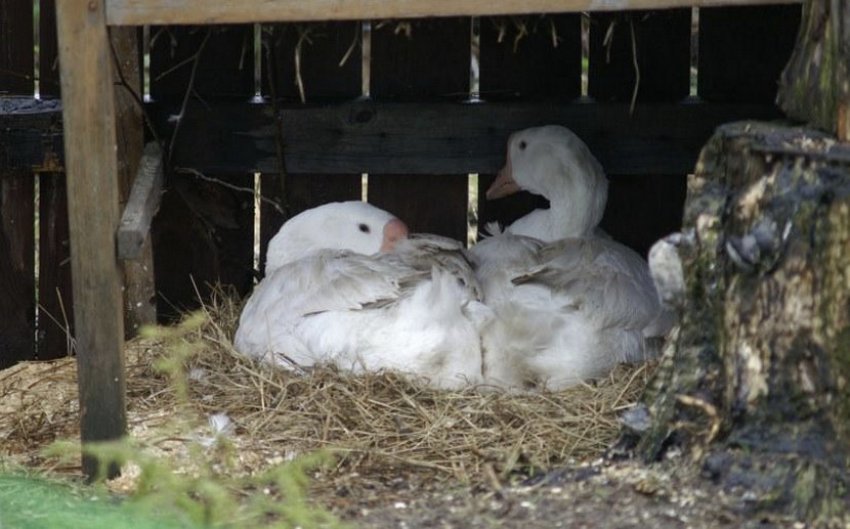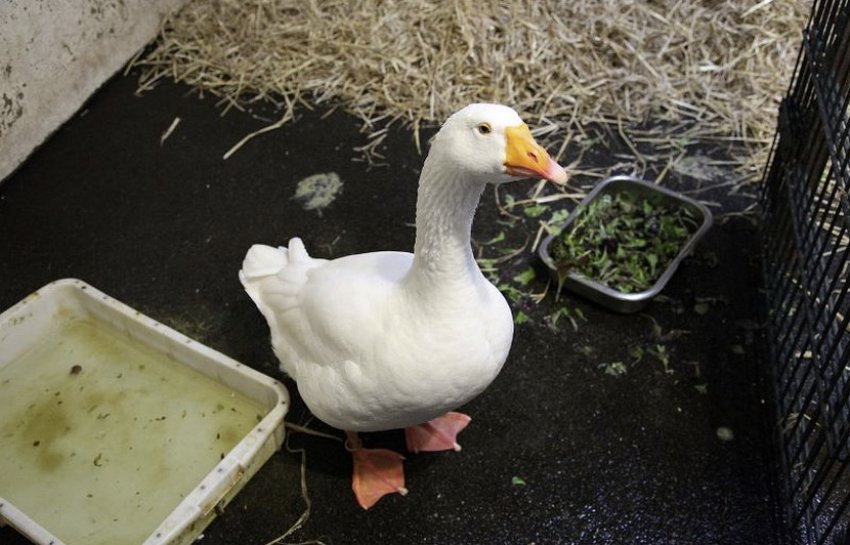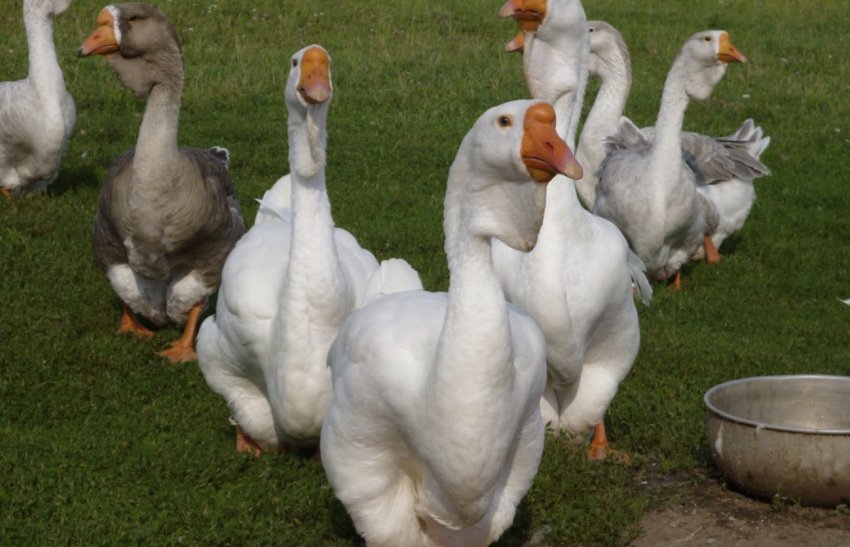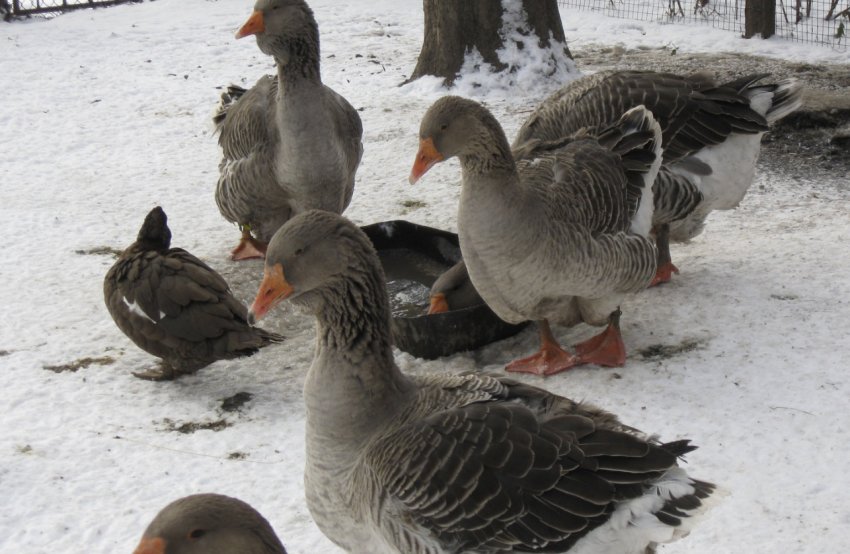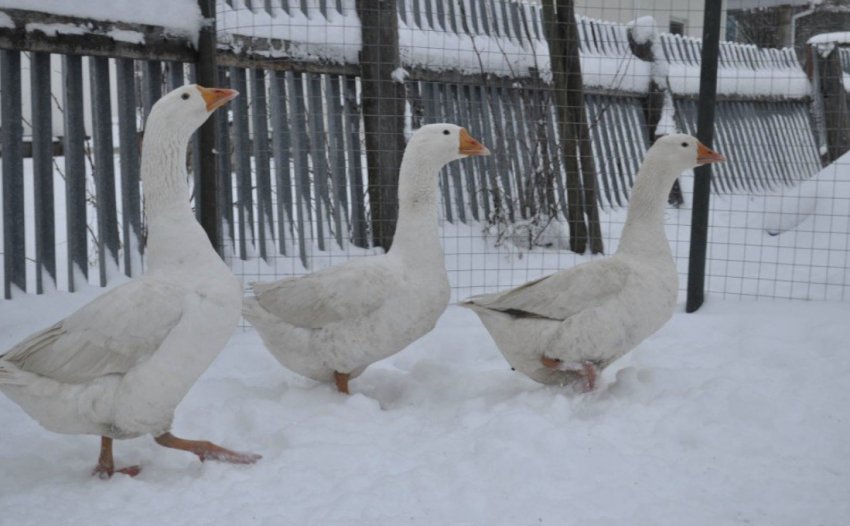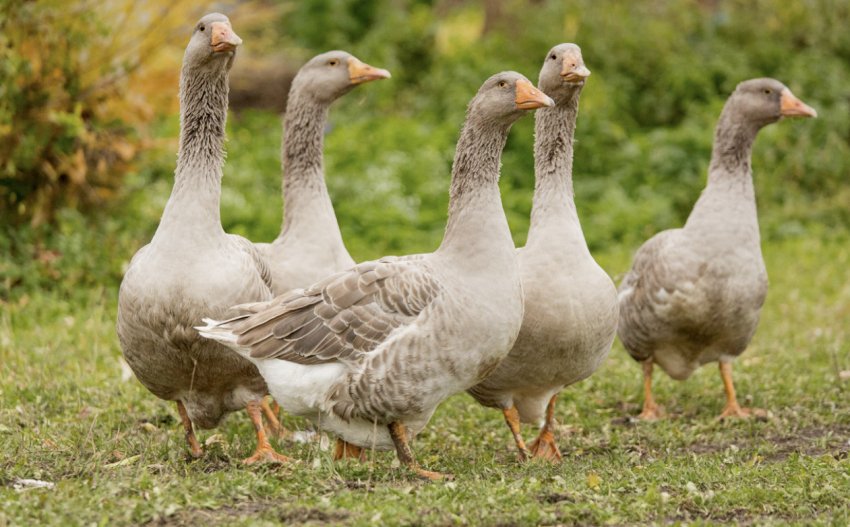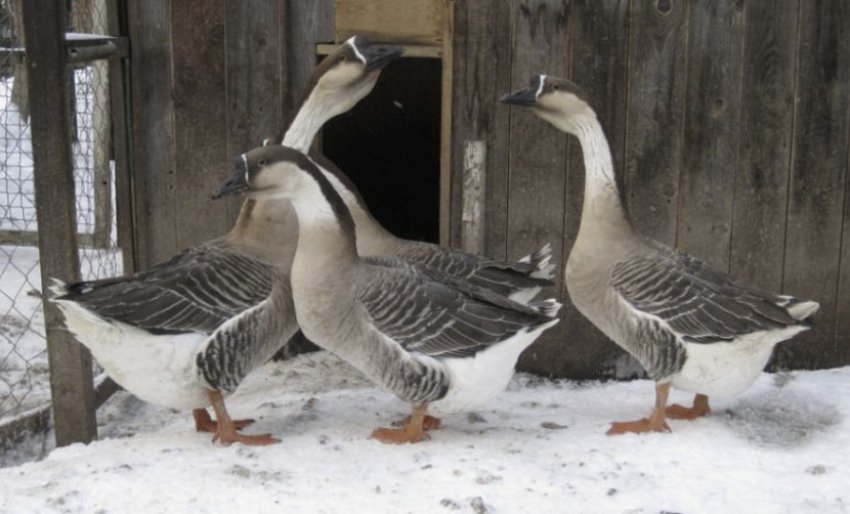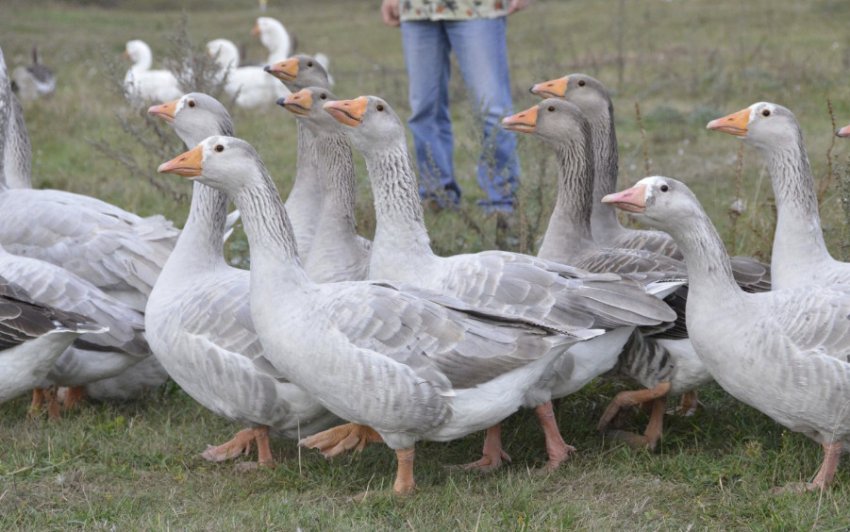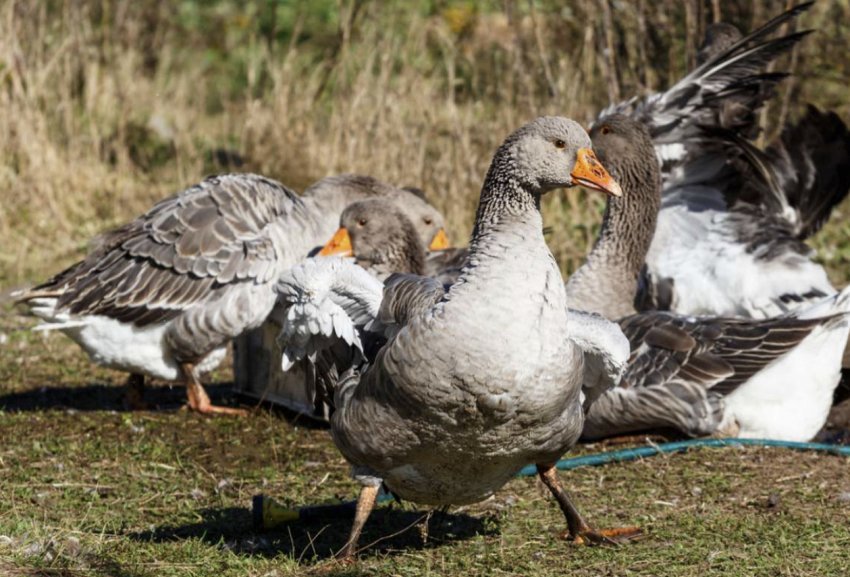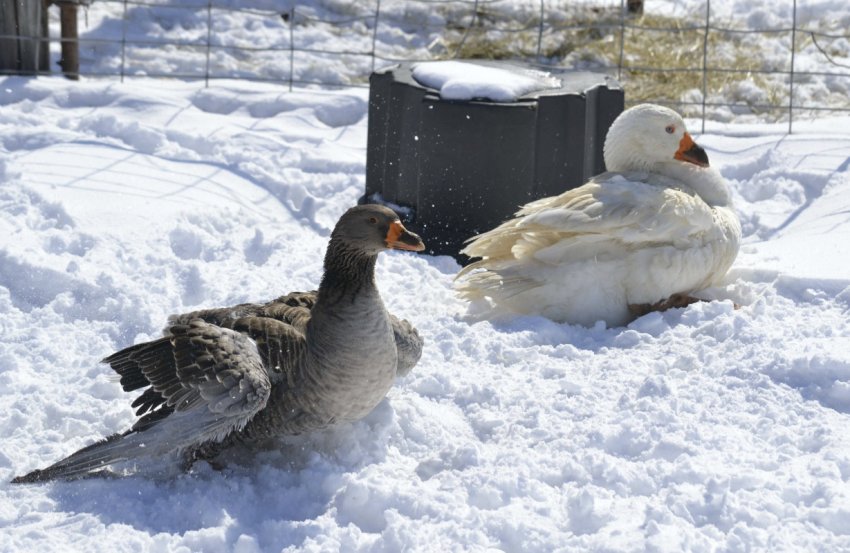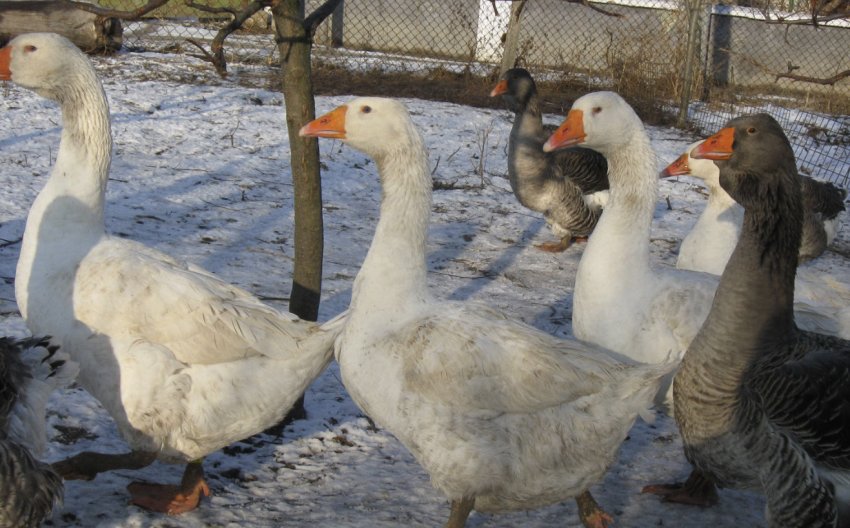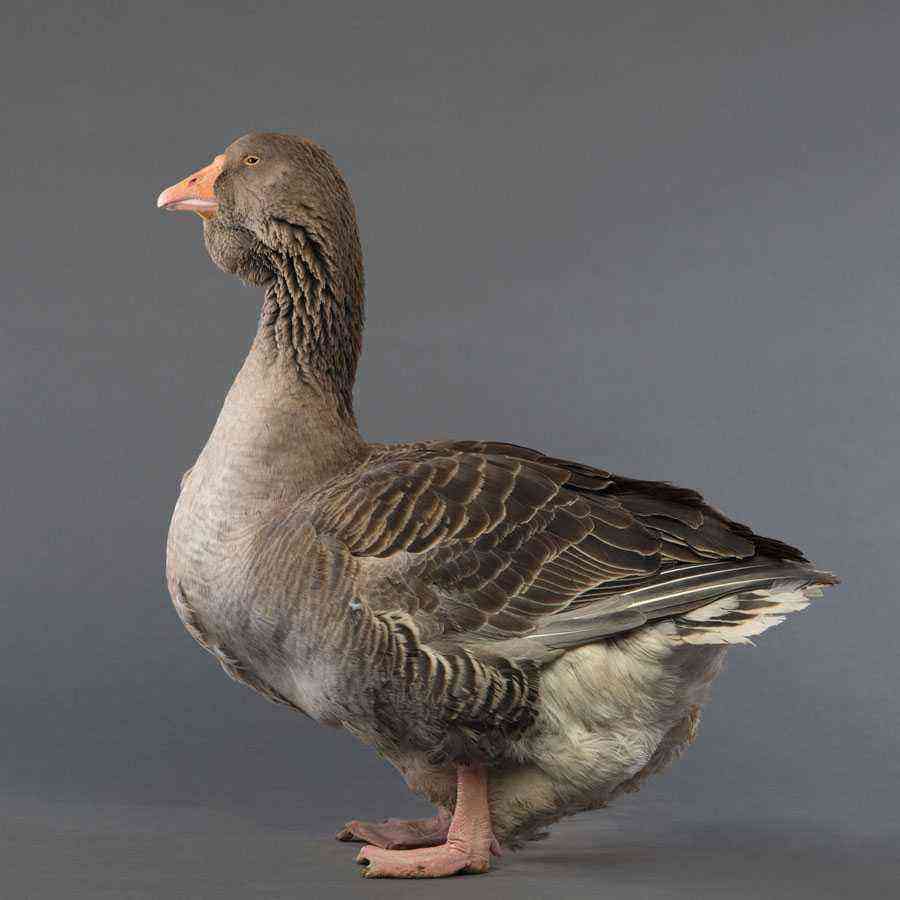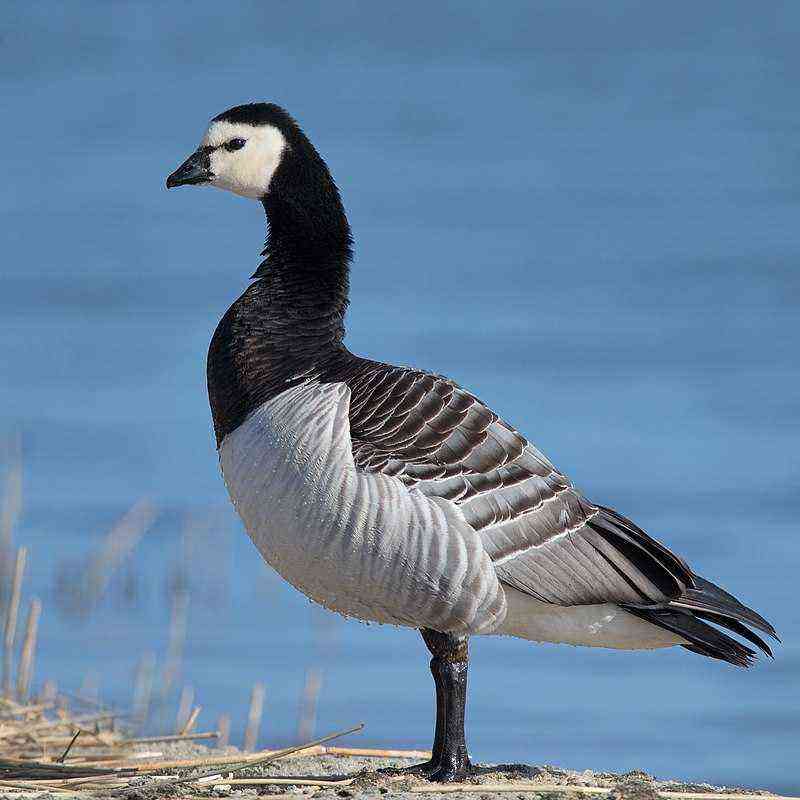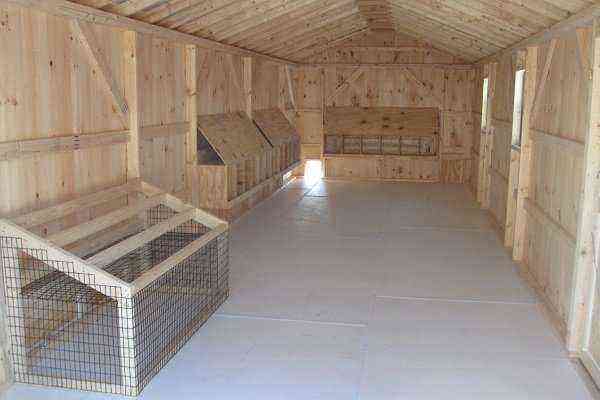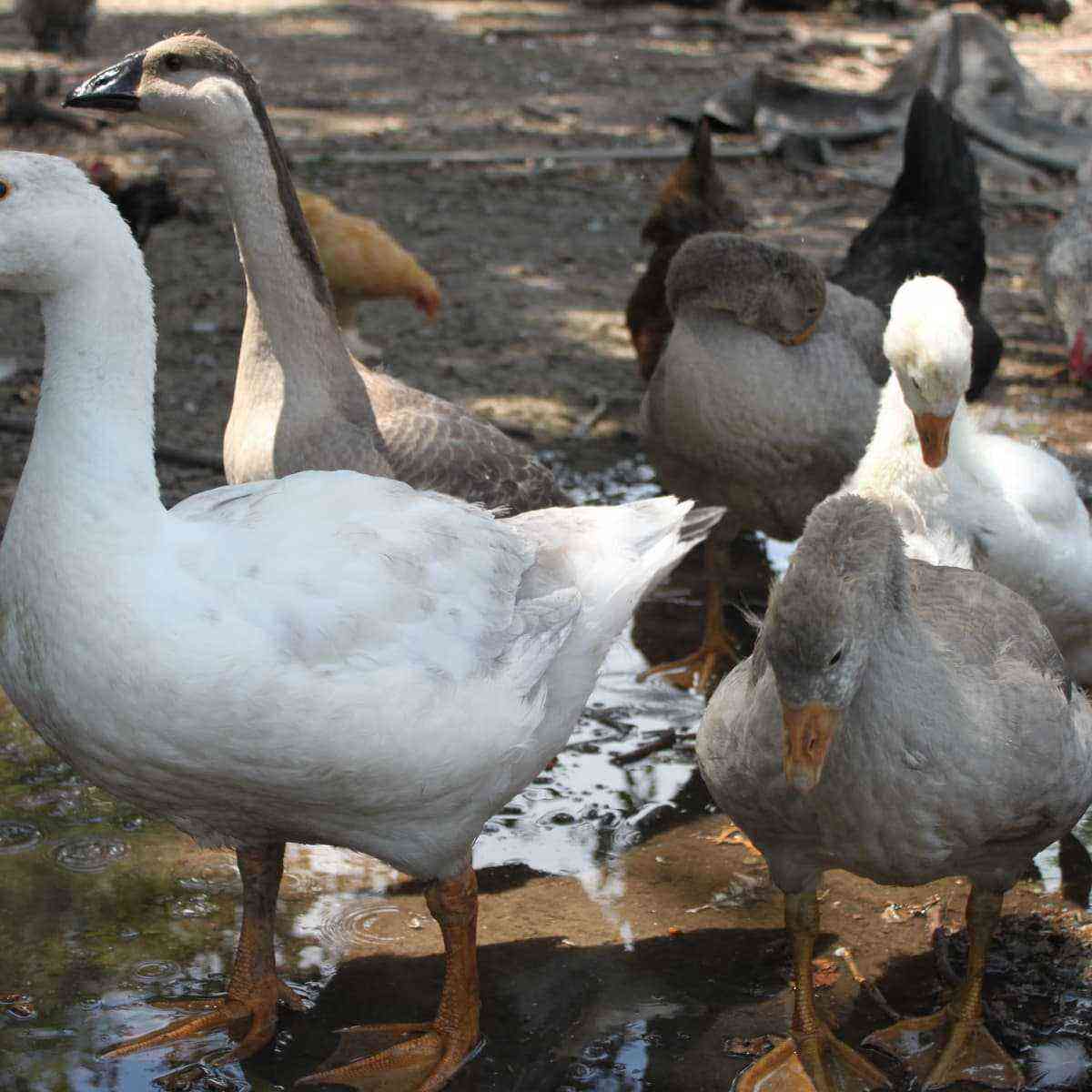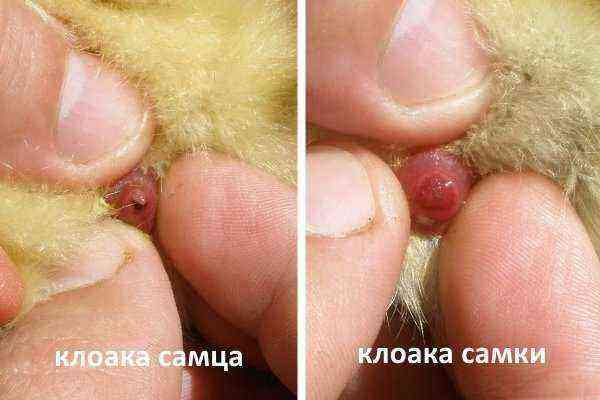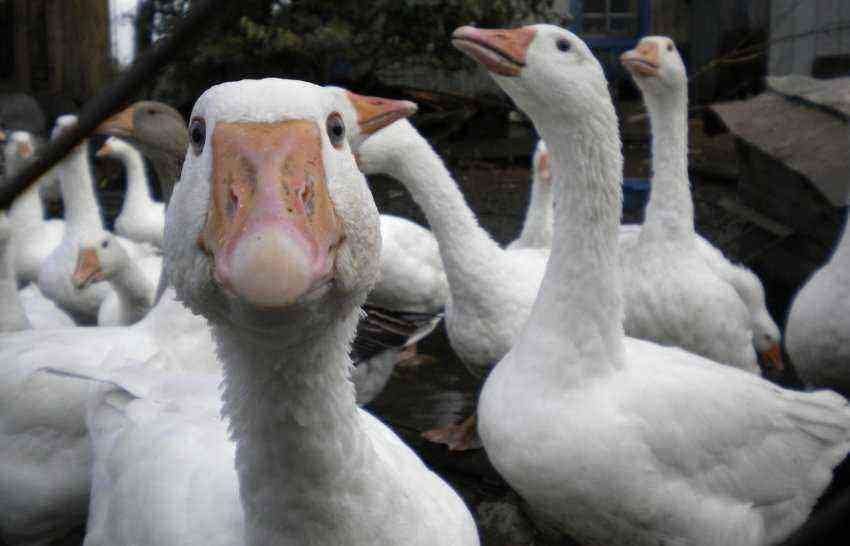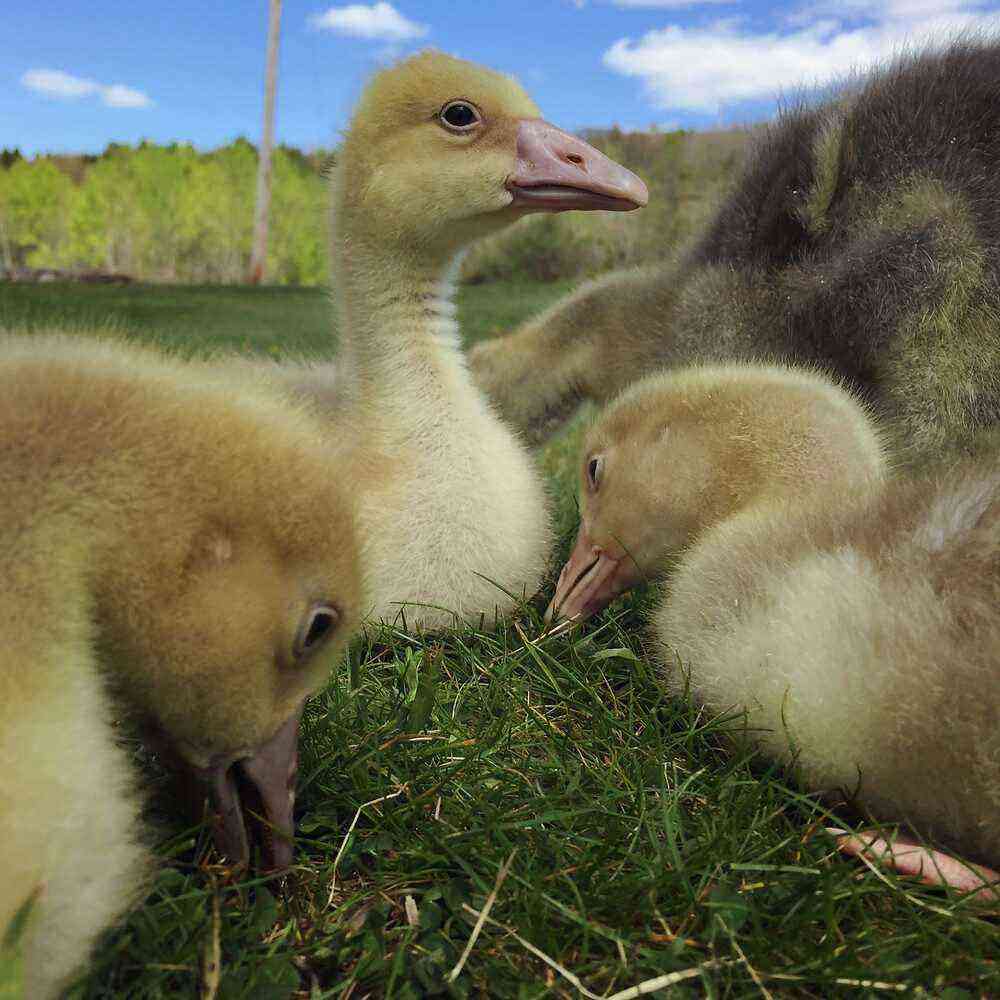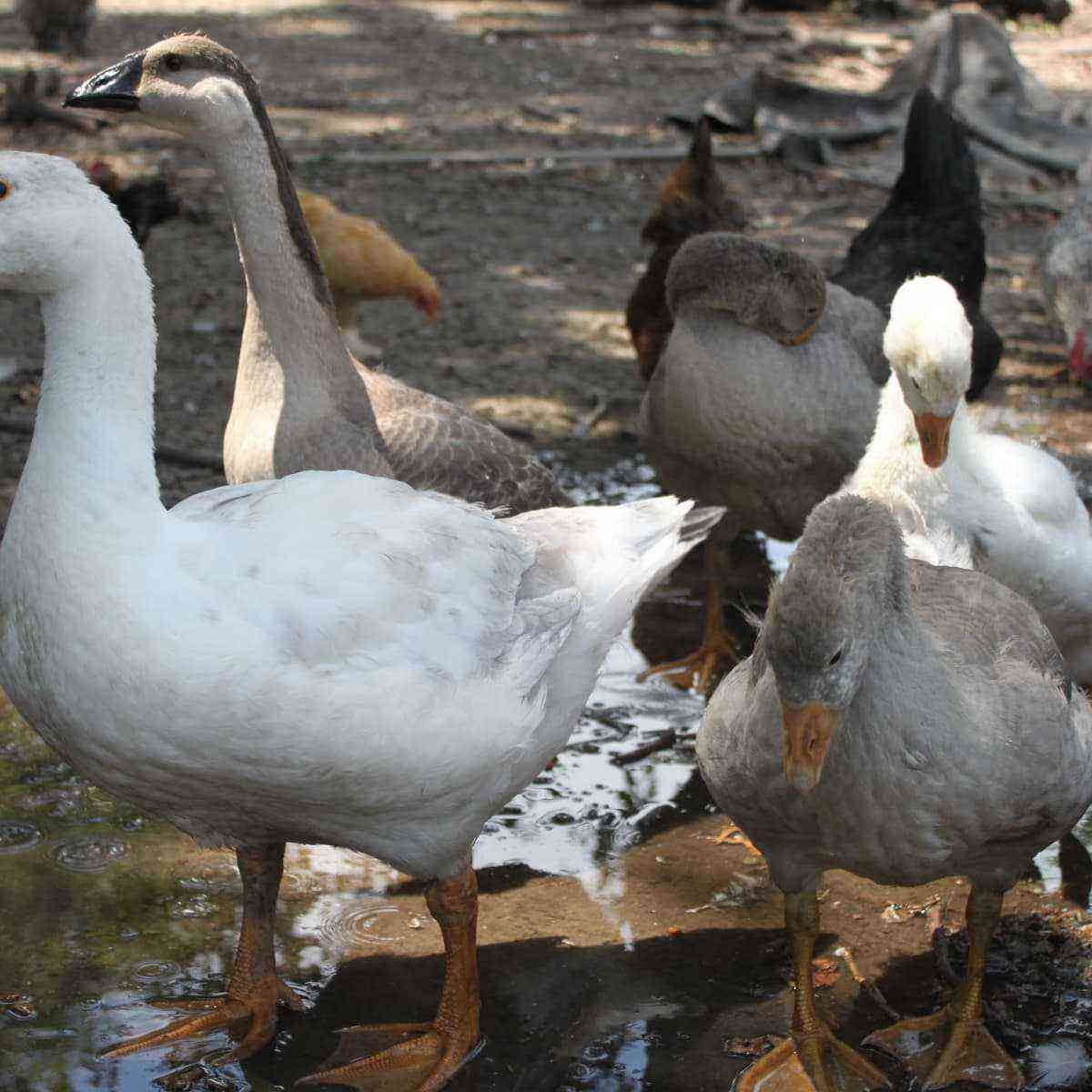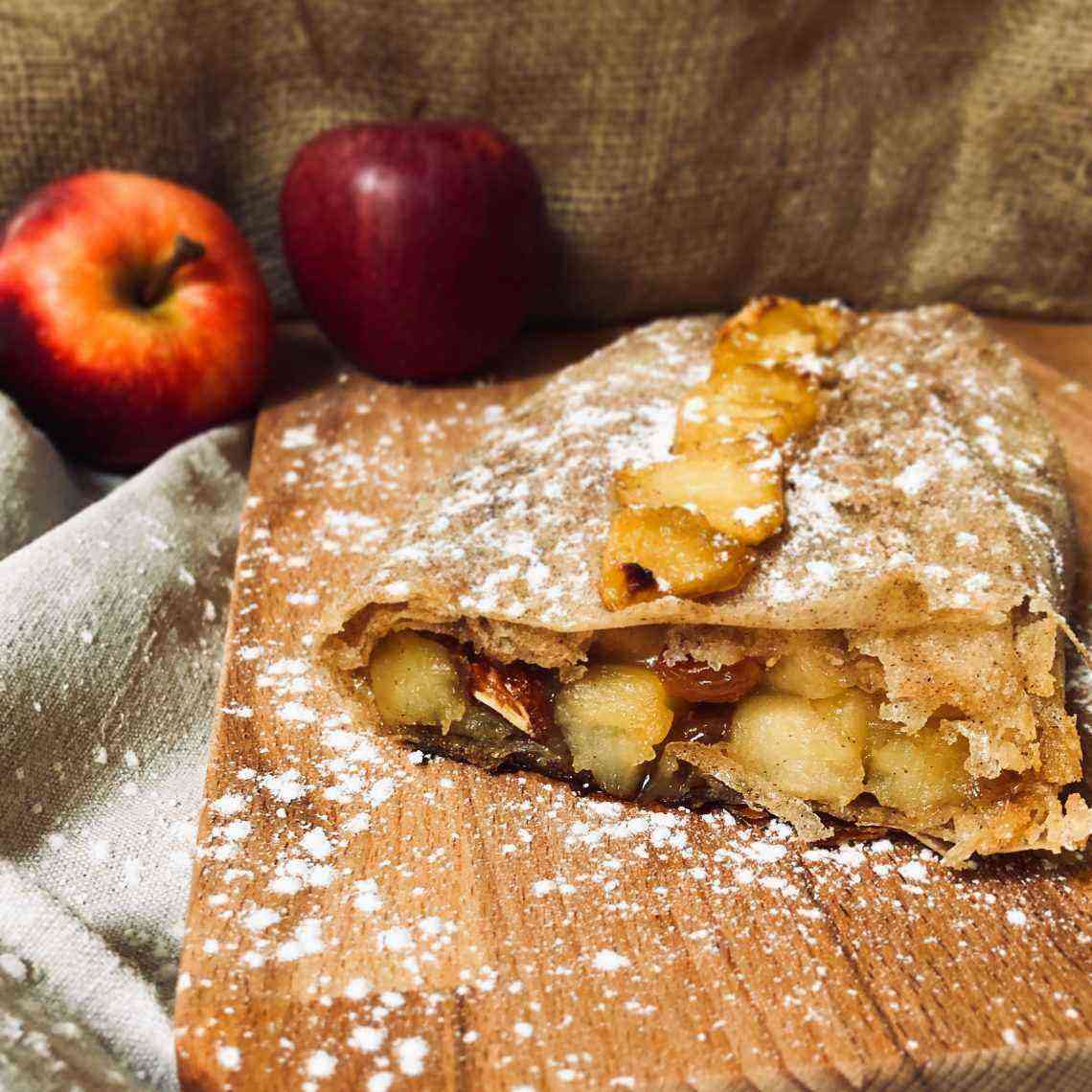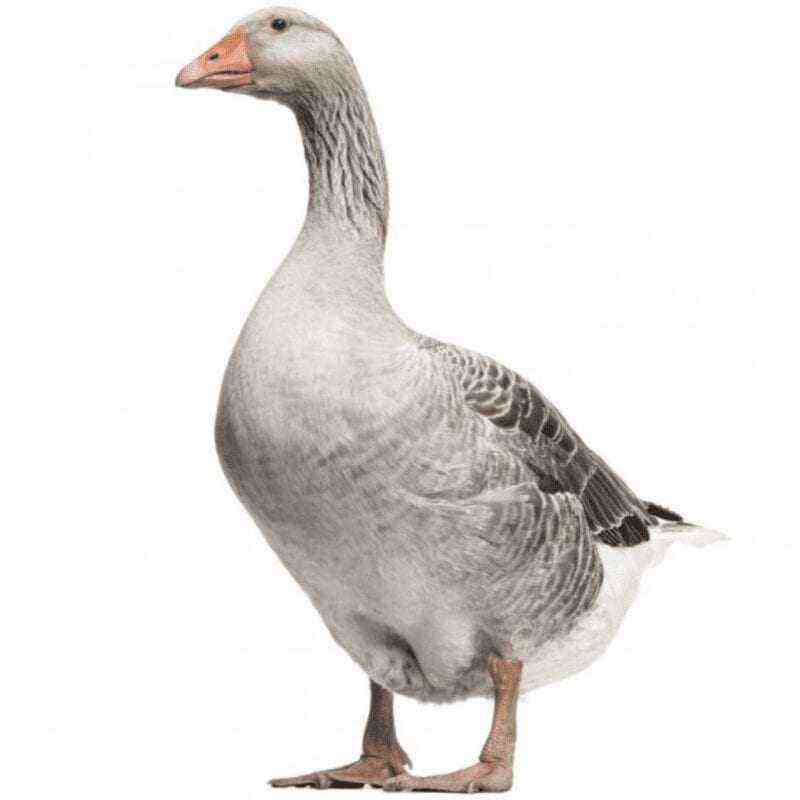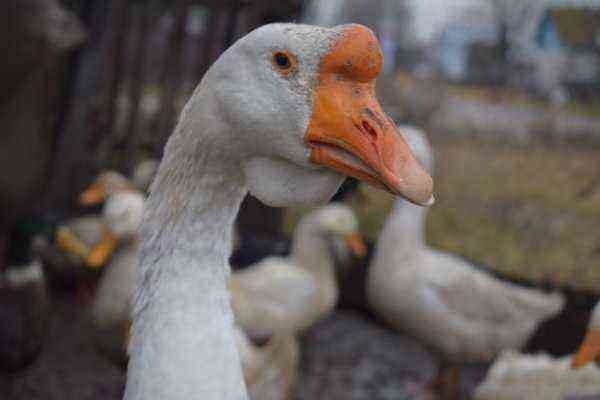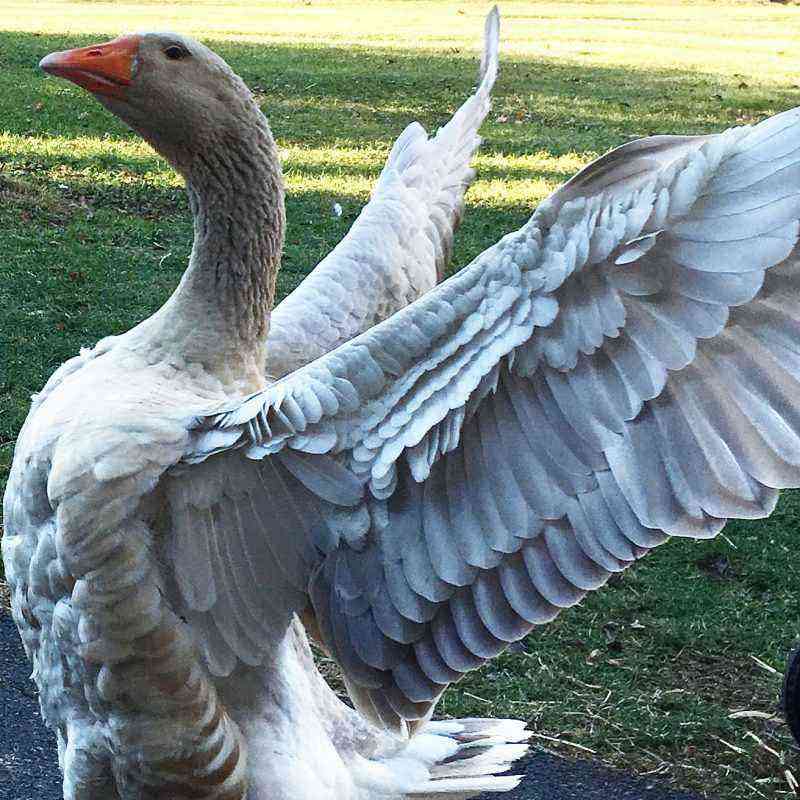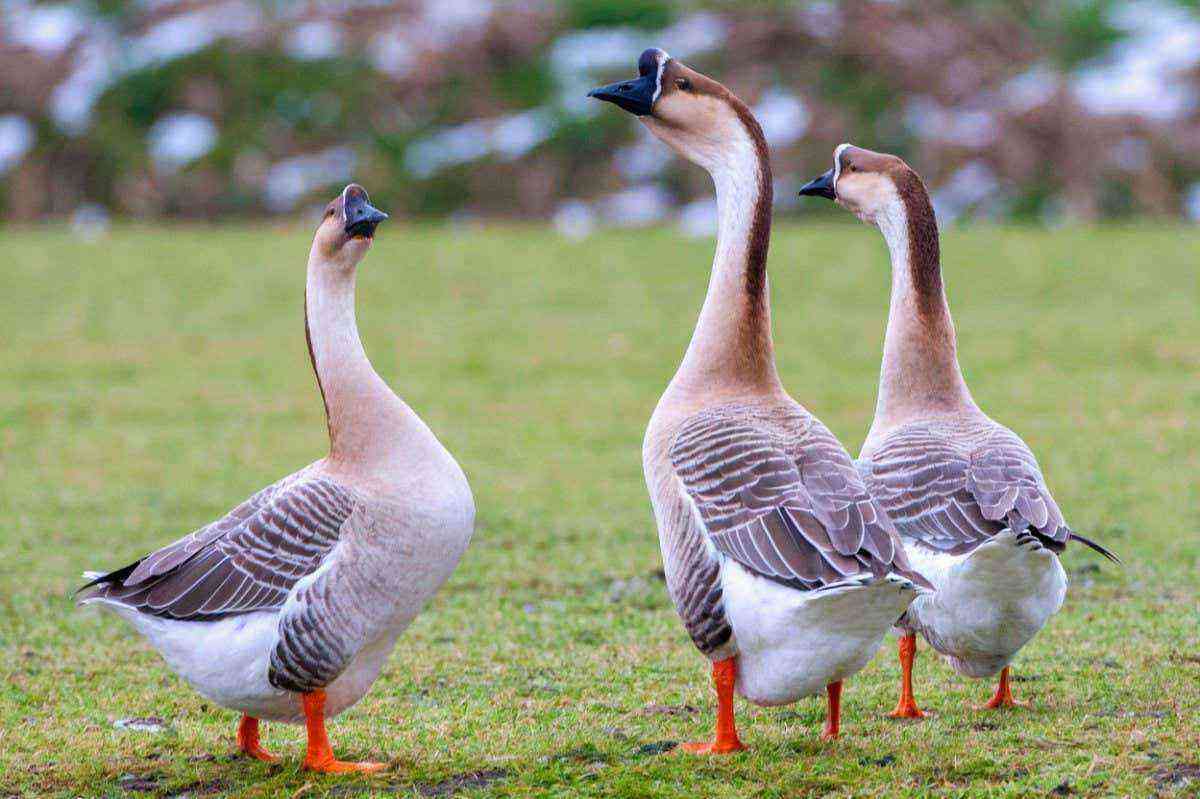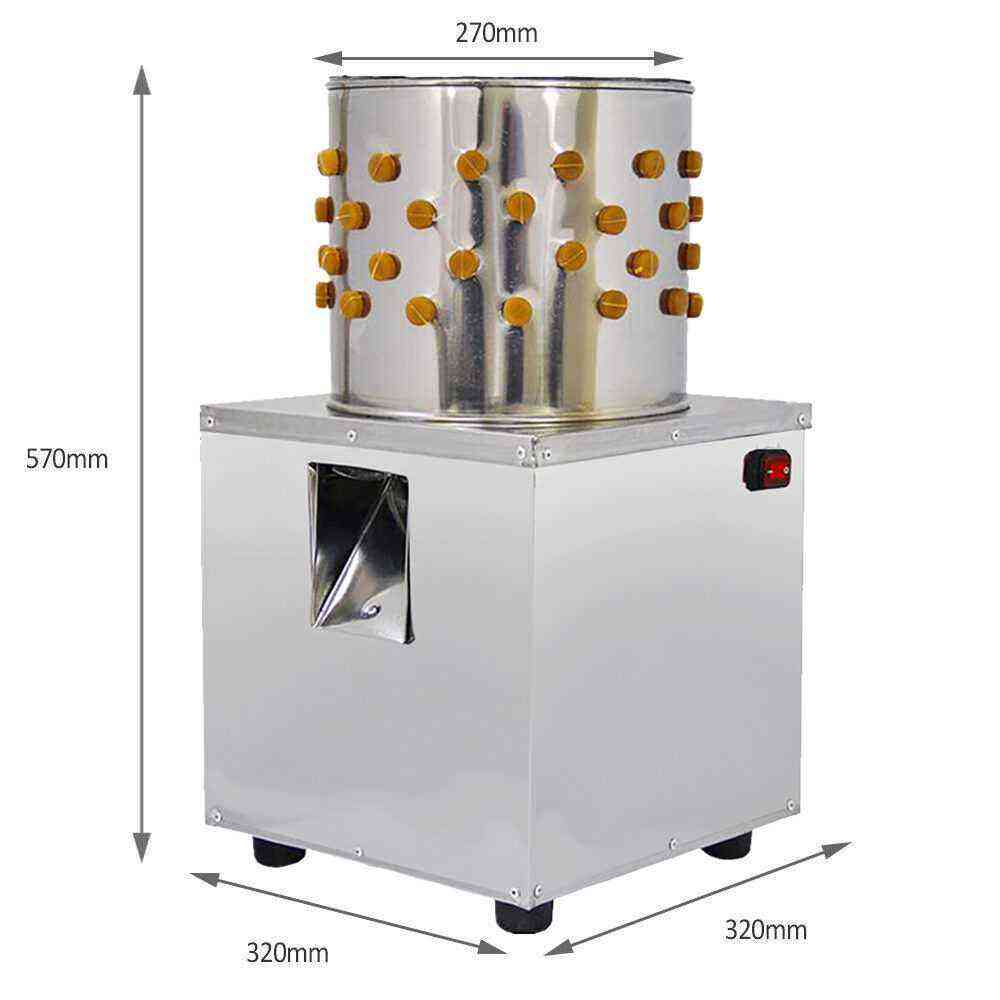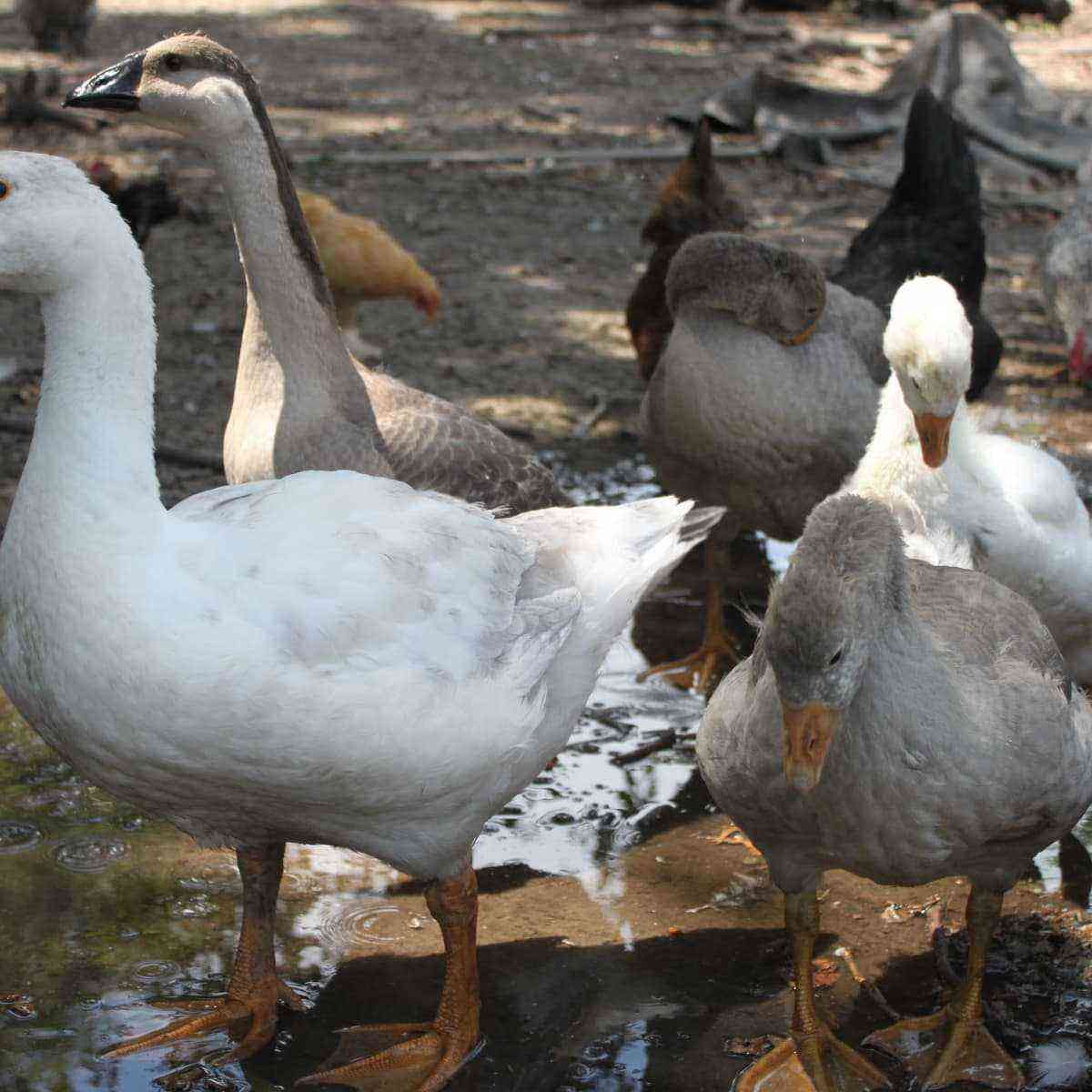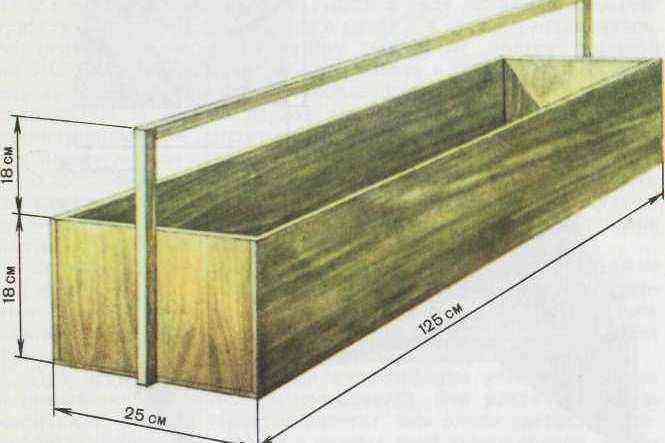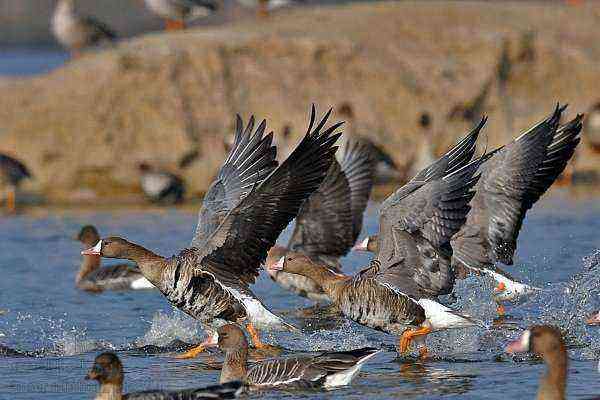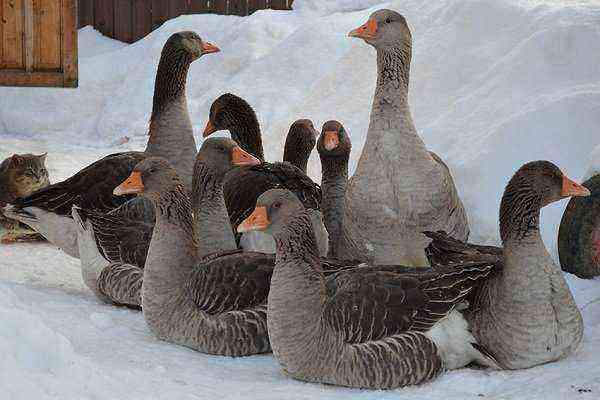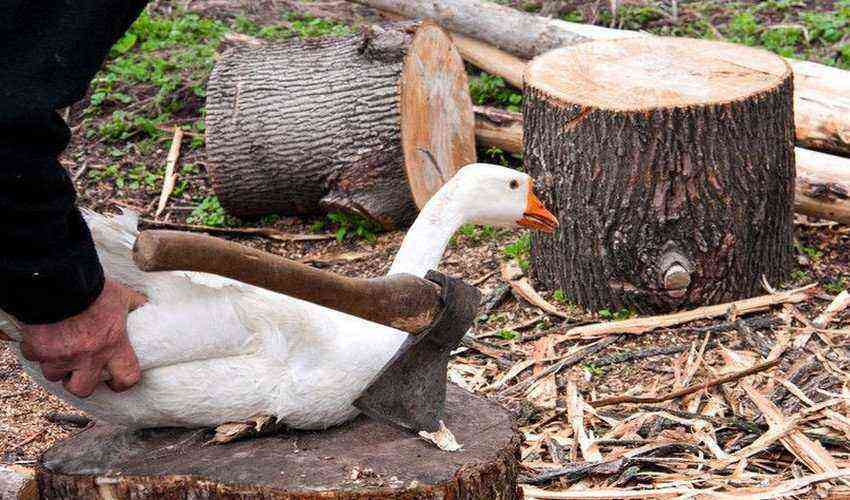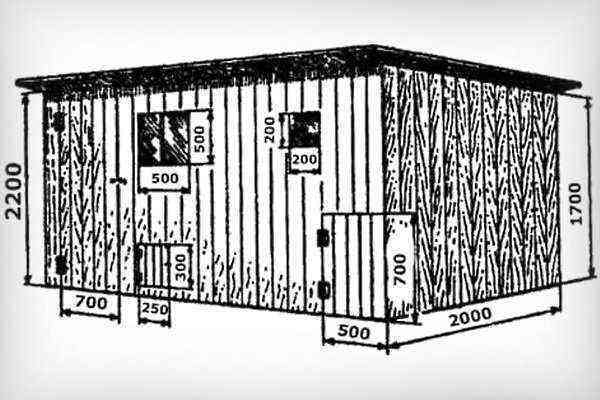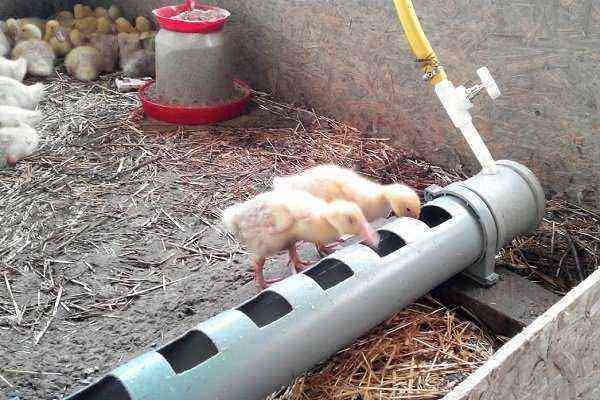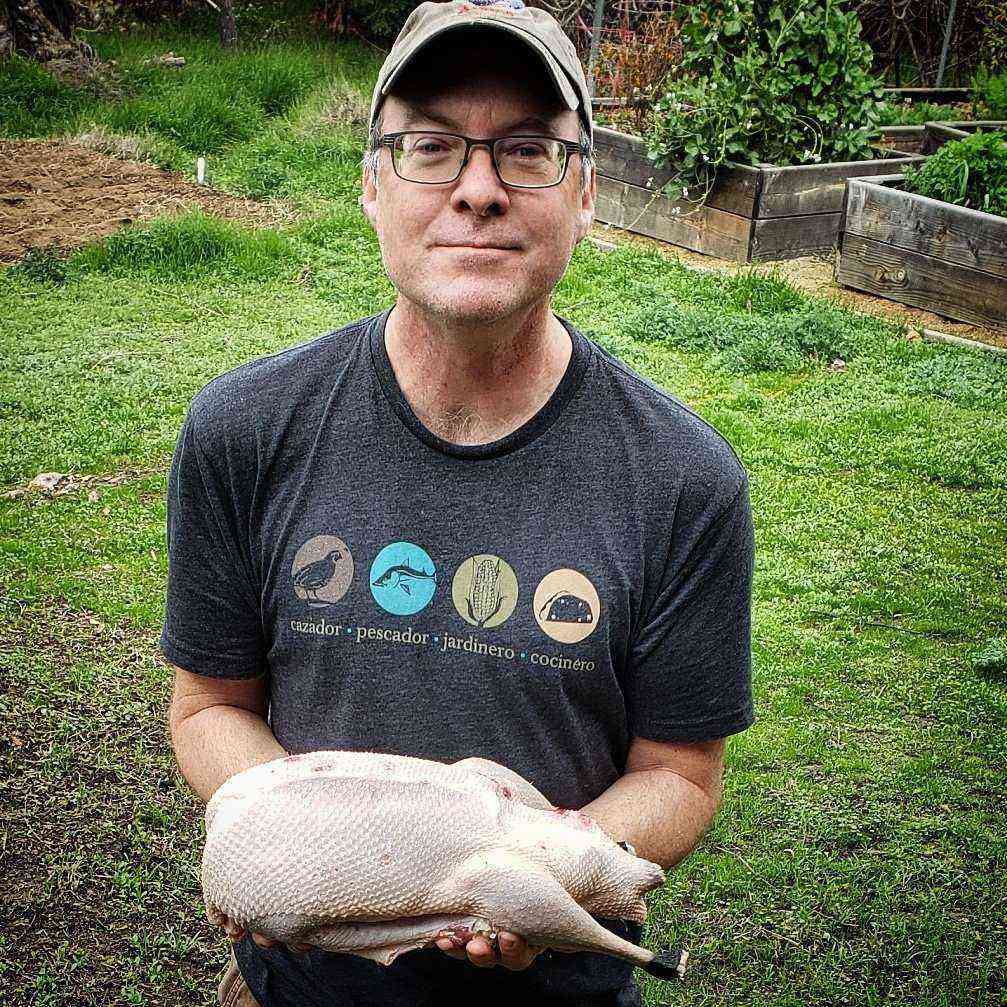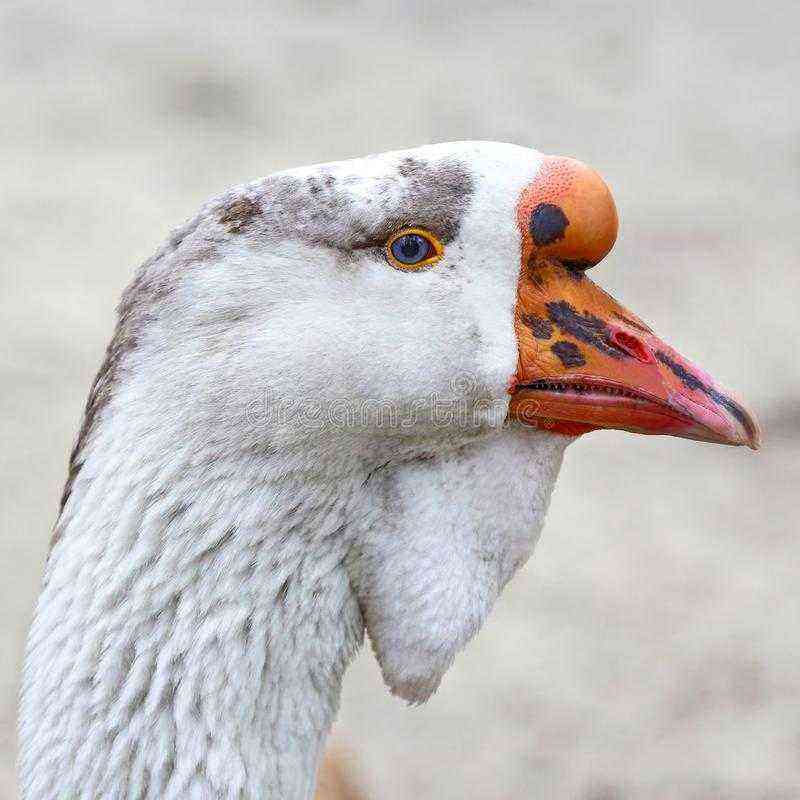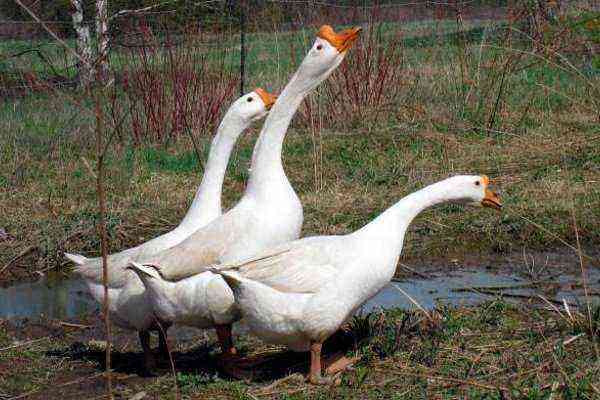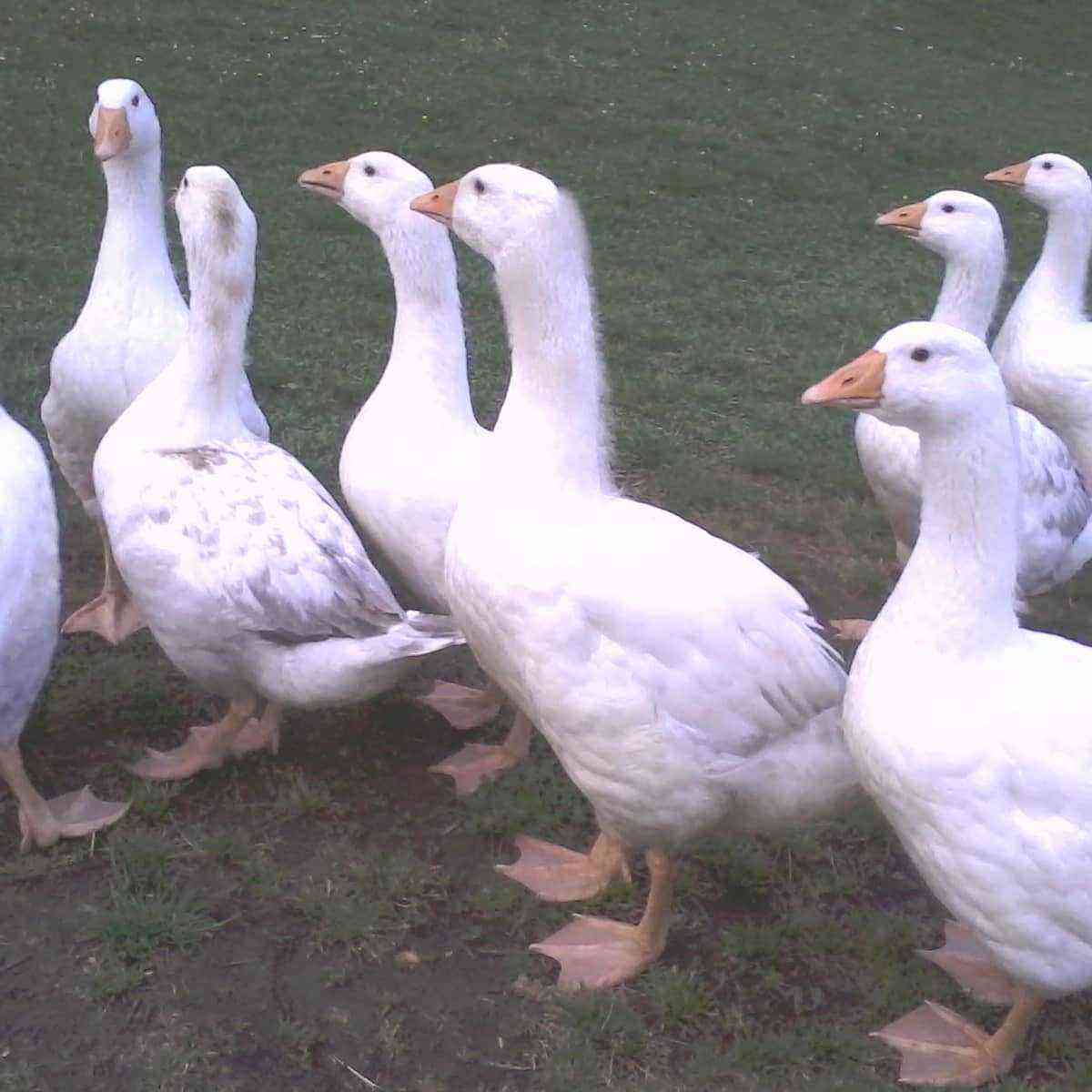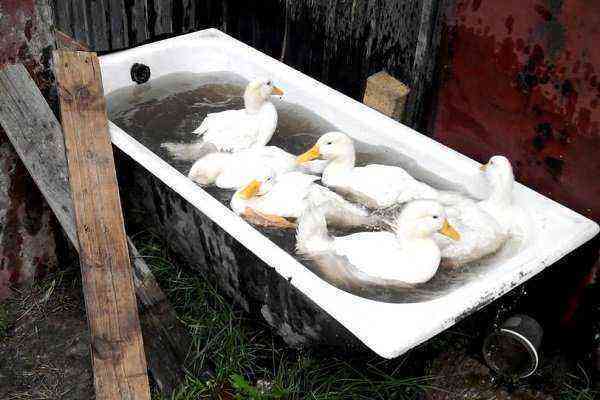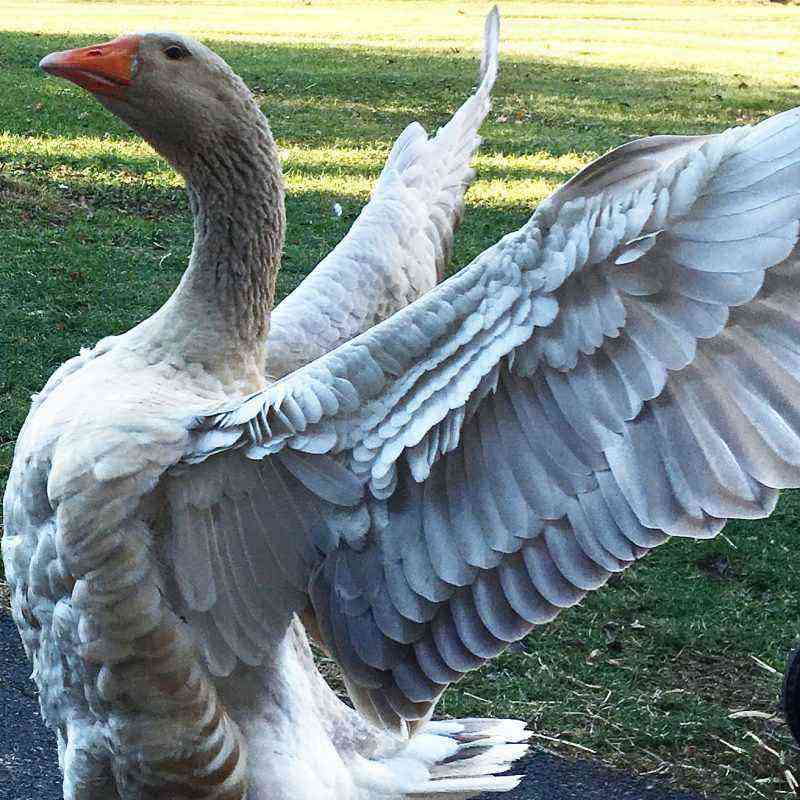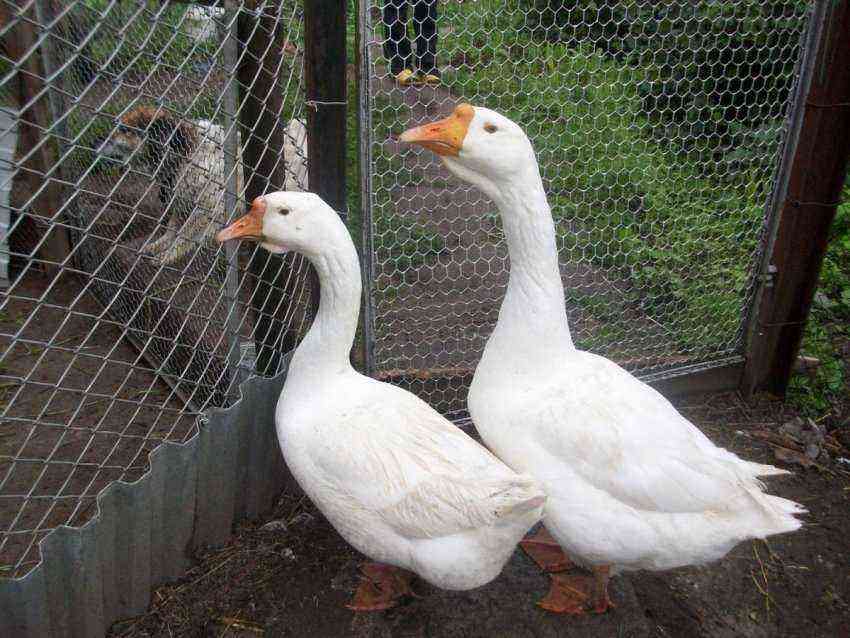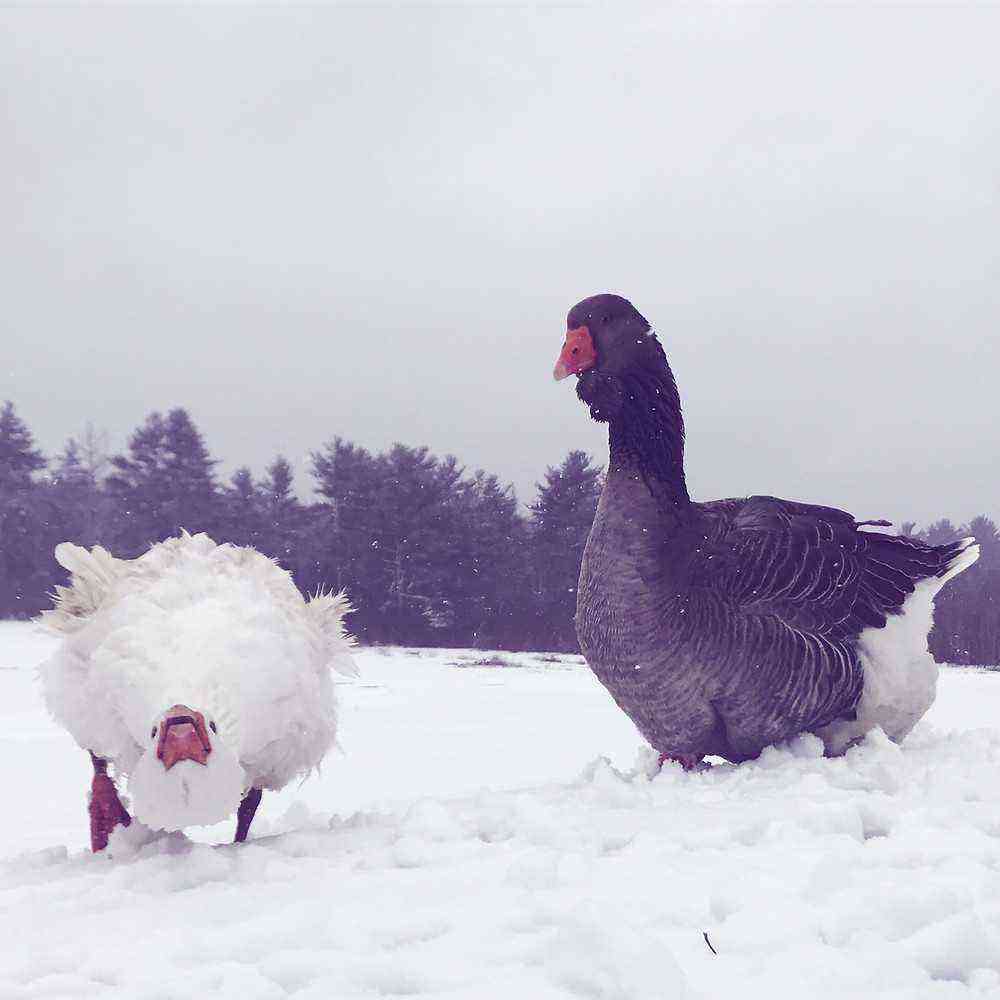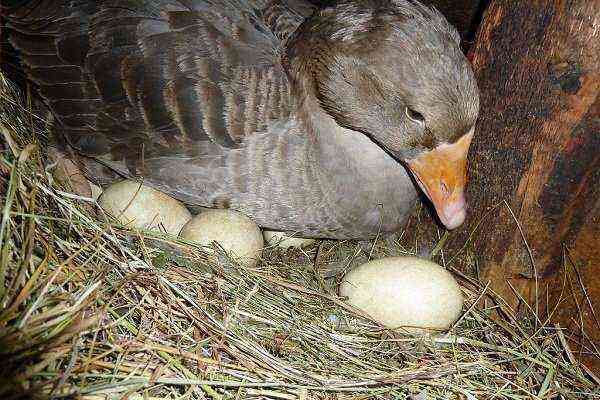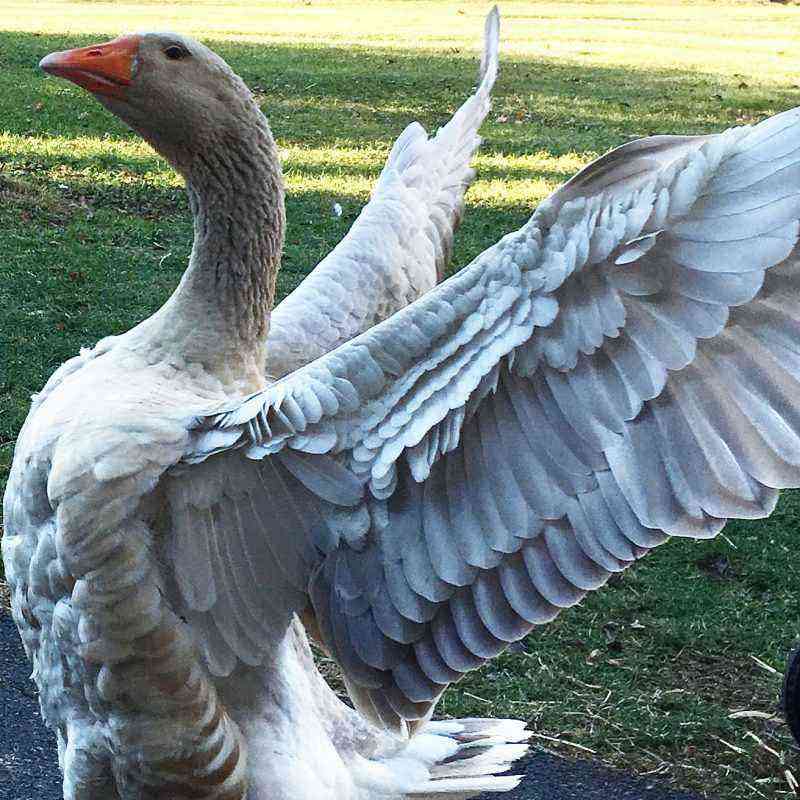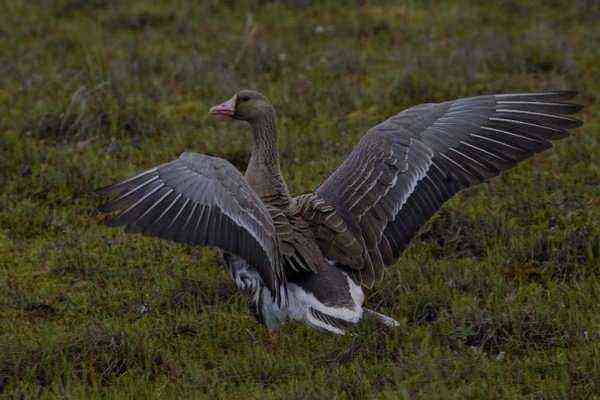Goose eggs are a very valuable nutritious product. However, when choosing a breed, you need to pay attention that not all laying hens give a large number of eggs. The details of this process and the proper care of hens will be discussed in this article.
At what age do geese start laying at home
On average, geese begin to rush at 7-9 months of age (and at what age, and how often this will happen, depends directly on the breed). Geese begin laying in the spring, and it lasts about 5 months (150-170 days). After how many days the bird stops laying, it also depends on the breed and on the conditions of its maintenance.
Important! Geese egg production is different from other poultry. When are the most productive months? — Here is an indicator of such a difference. Geese are late-maturing laying hens, since their maximum egg production is noticed at the age of 2-3 years. But laying hens can be used up to 6 years of age.
The weight of one egg is 130-200 g (depending on the size and type of geese).
Preparing for laying eggs
Approximately 30 days before the expected start of laying, the birds and the house must be prepared for nesting. This is a very important point, since its productivity will depend on the preparation.
Arrangement of the premises
As preparatory measures in the poultry house, it is necessary:
- provide laying geese with nests (at least 1 for 3 females). You can put dummies of eggs in them as a “bait”;
- equalize the temperature regime (23-25°C). The temperature must be constantly in the same interval;
- increase daylight hours to 14-15 hours a day;
- maintain a constant average humidity;
- daily cleaning of the house with fresh hay and bedding.
Bird care and feeding
Nutrition is the primary important factor on which the desire of laying hens to lay eggs will depend. To maintain productivity, it is necessary to adjust the diet accordingly, namely:
- increase the amount of feed (the bird will lose weight due to the deposition of eggs, so this loss must be compensated in advance). The optimal weight is 500 g;
- add fresh grated and boiled vegetables to the daily diet;
- enrich food with vitamin E (fresh grass, sprouted oats or hay).
Important! In addition to nutrition, it is necessary to provide the bird with peace, lack of stress. Any changes in the environment will not benefit the future mother hen.
There are no special restrictions in the diet of carrying geese. Like all birds, they should not be given high-calorie foods (such as corn) as this food tends to cause weight problems.
Signs of oviposition
Determining the intention of the goose to leave offspring is very simple: the female clearly shows both behavioral and external changes. Here are some of them:
- there is a noticeable anxiety (constant transition from place to place, restlessness);
- there is a craving for gathering (stones, grass, feathers);
- sometimes there is plucking of one’s own plumage on the chest;
- the arrangement of the future nest begins;
- the female’s gait becomes uneven, “heavy”;
- the tail is constantly lowered;
- the bird spends a lot of time in one place.
The most productive breeds
Goose eggs are very useful and nutritious, so if you need to get this particular product, you should choose the most productive breeds for the farm. Not everyone knows which breeds have the highest egg production.
Kholmogorskaya
Unusual representatives of the goose family, a feature of which is a massive body (up to 11 kg) and humps on the neck and beak. The most common are white, gray and mixed colors.
Before the Second World War, this breed was considered very productive, but now these representatives have become a great deficit, and egg production has fallen to 20 eggs per year.
Toulouse
Toulouse geese are large representatives of poultry (11-12 kg) with a voluminous body and a neck with a large “second chin”. They are usually dark or light brown in color.
Egg production varies depending on the age of the laying hen:
- in the first year – 20 eggs;
- in the second – 25-30;
- in the third – 40-50.
The eggs are large, weighing about 200 g.
Rhine
This breed is considered one of the most productive.
Rhine fast-growing representatives have a large, most often white body with massive paws. There are a couple of characteristic fat folds on the abdomen.
With a properly balanced diet, these birds can produce up to 100 large eggs per year.
Vladimir
Large Russian goose, bred in the Vladimir region (where it got its name), where it is most common.
Medium size (7-10 kg), color can vary from white to brown, most often a mixed type of plumage.
Gives about 70 large eggs per year.
Pereyaslovskaya
Medium-sized breed of geese. A small body with a long neck is most often light smoky in color. On the back of the neck there is a dark brown stripe, the beak is black.
On average, Pereyaslov breeds produce up to 70 large eggs per year.
Tula
This breed belongs to the fighting geese. They have short legs, massive body and neck. The beak is yellow, short, with a blunt end. Shades can be varied: from white to dark brown.
On average, it produces about 30 medium-sized eggs per year.
Pskov
Medium-sized breed (7-9 kg). Geese have a massive body, long neck and strong legs. A characteristic feature is the presence of a white spot on the forehead, for which they are often called “bald”.
The productivity of these representatives reaches 30-40 eggs per year.
Landskaya
This breed has characteristic features that will not allow it to be confused with any other goose. The color of the massive body can be varied, while the belly always remains white. A feature of birds is a large fat fold that sags to the ground.
The laying hen produces 40 eggs per year, the approximate weight of which is about 150 g.
Did you know? Domestic geese, unlike their wild relatives, cannot fly. More precisely, they lost this skill due to the large weight inherent at the genetic level.
Features of egg production in winter
Since the process of laying eggs in winter is not entirely natural for geese, certain conditions must be created for the winter “harvest”. So, to get eggs in winter, you need:
- Artificially heat the house to the optimum temperature (23-25°C).
- The room should be well ventilated (but without drafts).
- Clean, dry bedding. Hay should be removed and placed daily.
- Increasing daylight hours with special lamps. Daylight hours should last at least 13 hours.
- Nutrition should include a large amount of vitamins and minerals. It is advisable to add salt to laying hens (1-2 g per day).
- Regular walking. Birds do not like to sit still even on cold winter days. To prevent frostbite, it is sufficient to cover the walking yard with hay or other bedding, which must be completely dry.
How to increase poultry productivity
The productivity of a bird directly depends on the quality of nutrition and life in general. With proper feeding, regular walking and comfortable conditions, the animal will rush a lot, since the instinct to procreate is pronounced.
However, if the goose’s egg production is not highly developed, you should resort to the following recommendations:
- Balanced feeding. The bird should receive a lot of fiber, JBU and amino acids. It is worth using prepared mixtures formulated specifically for laying hens. Boiled vegetables in the daily diet will also be of great benefit.
- Additional food. Small shell rock, chalk and limestone will help improve digestion, as well as supplement the body with all the necessary trace elements.
- Silage and hay must be available at all times: they are necessary for the bird both for food and for arranging the future nest.
- Comfort. Make sure your bird gets plenty of active rest. The house should be clean, comfortable, well ventilated and well lit.
Did you know? On goose eggs, the best and lush dough is obtained.
Reasons for the decline in egg production
If by the end of spring the goose has not begun to rush, or a sharp decrease in productivity has been noticed, it is necessary to pay attention to the maintenance and nutrition of the bird. The reasons for low egg production can be:
- vitamin deficiency – it is necessary to supplement the diet with vegetables, herbs or ready-made fortified supplements;
- monotonous food – introduce new “dishes” into the diet or combine the diet in a different way;
- hunger – increase the number of meals, add more hay for feeding;
- temperature difference – the mode in the poultry house should be constant;
- lack of light – you need to increase daylight hours to at least 13 hours;
- health problems (avitaminosis, prolapse of the oviduct, peritonitis, retraction of the tongue). You need to contact a veterinarian who will diagnose and prescribe the necessary treatment.
There is also such a problem as hormonal imbalance. In this case, the geese stop rushing. If you do not restore this imbalance, you can lose the productivity of the bird completely.
So, with proper care, balanced nutrition and good health of the bird population (layers), a good egg harvest is guaranteed. In the event of a noticeable decrease in egg production, it is necessary to take a closer look at the birds, because when determining the cause of a decrease in productivity, it will be easy to correct your mistakes and restore the laying process.
